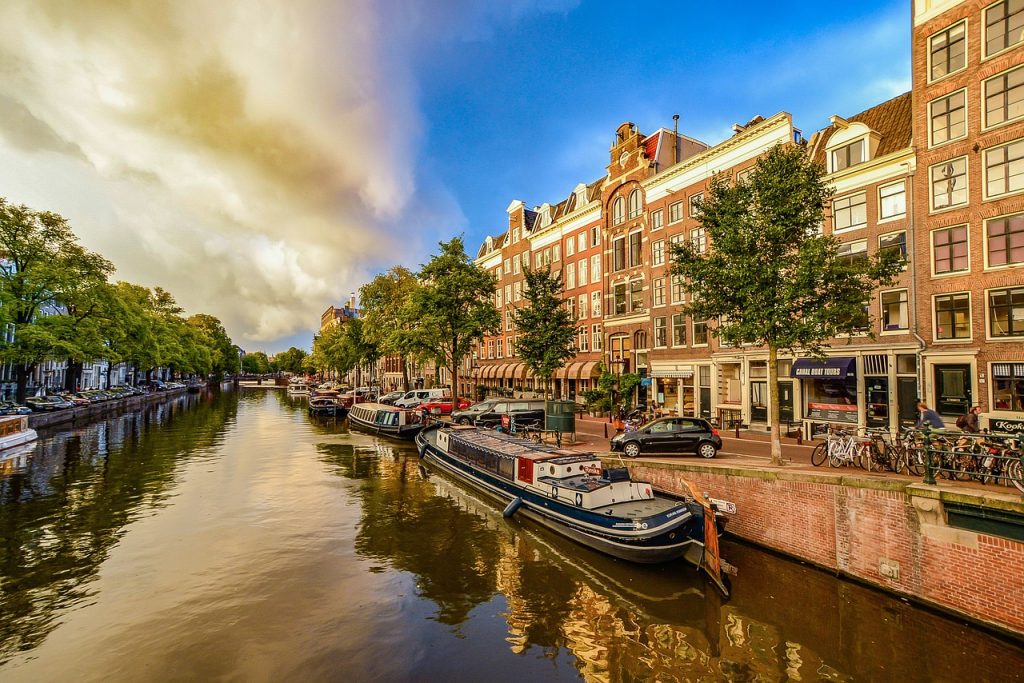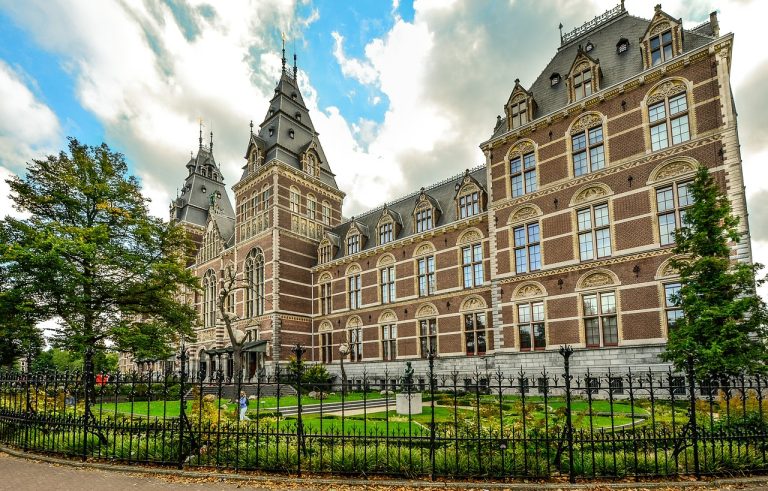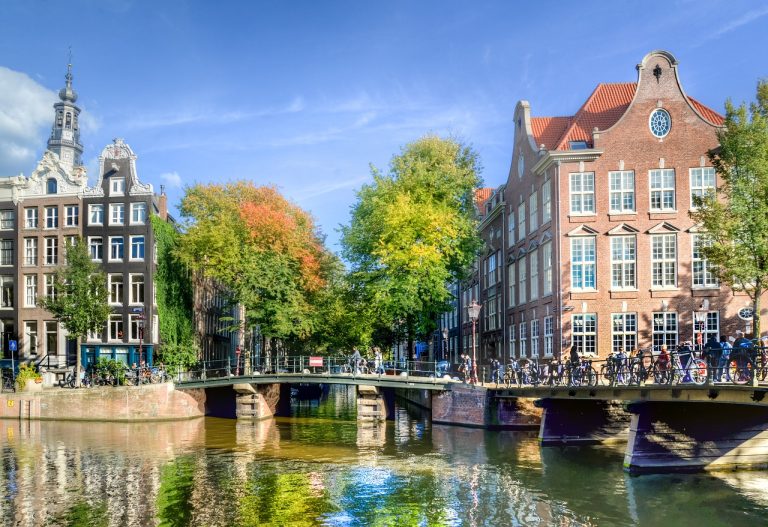Amsterdam Netherlands Video
The Cultural Evolution of Amsterdam Netherlands
Amsterdam, the capital city of the Netherlands, is renowned for its rich cultural heritage and vibrant atmosphere. Over the centuries, the city has undergone a fascinating cultural evolution, shaping its identity and making it a top destination for travelers from around the world. From its humble beginnings as a fishing village to its current status as a global hub of arts, history, and diversity, Amsterdam has a captivating story to tell. Let’s explore the cultural evolution of this remarkable city in the following sections.
The Founding of Amsterdam
- Geographical Location: Amsterdam is situated in the western part of the Netherlands, close to the North Sea. Its strategic location near the Amstel River estuary played a crucial role in its development as a trading center.
- Origins of the Name: The name “Amsterdam” is derived from the city’s origins as a dam on the river Amstel. The dam was constructed in the late 12th century to protect the village from flooding.
- Medieval Trade Hub: In the 13th century, Amsterdam grew as a bustling trade hub due to its favorable location and access to waterways. It became an important center for fishing, shipbuilding, and international trade.

The Golden Age of Amsterdam
- Economic Prosperity: The 17th century, known as the Dutch Golden Age, marked a period of unprecedented economic growth for Amsterdam. The city became a dominant force in global trade, with the Dutch East India Company and West India Company headquartered there.
- Artistic Renaissance: Amsterdam flourished as a center of arts and culture during the Golden Age. Celebrated painters such as Rembrandt van Rijn and Johannes Vermeer created masterpieces that continue to inspire artists today.
- Canal Belt: The iconic canal belt, consisting of concentric rings of canals, was constructed during this period. The canals not only served as transportation routes but also played a role in urban planning and defense.

Amsterdam as a Cultural Melting Pot
- Immigration and Diversity: Amsterdam has a long history of attracting immigrants from various parts of the world. Over the years, people from different cultures and backgrounds have contributed to the city’s vibrant and diverse atmosphere.
- Tolerance and Liberalism: Amsterdam is known for its progressive values and open-mindedness. The city has been at the forefront of movements advocating for individual freedoms, including the acceptance of different sexual orientations and the decriminalization of certain substances.
- Multicultural Neighborhoods: Neighborhoods like De Pijp and Chinatown showcase the multicultural fabric of Amsterdam. These areas offer a rich tapestry of cuisines, languages, and customs, providing visitors with a glimpse into the city’s multicultural identity.
Arts and Culture in Amsterdam
- Museums and Galleries: Amsterdam is home to world-class museums and galleries, including the Rijksmuseum, Van Gogh Museum, and Stedelijk Museum. These institutions house extensive collections that span various artistic periods and styles.
- Performing Arts: The city boasts a thriving performing arts scene, with venues like the Royal Concertgebouw and the Dutch National Opera showcasing a diverse range of music, theater, and dance performances.
- Street Art: Amsterdam embraces street art as a form of creative expression. The city streets are adorned with colorful murals and graffiti, adding an urban artistic touch to its already vibrant atmosphere.

Amsterdam’s Architectural Marvels
- Dutch Renaissance Architecture: The city’s architectural heritage includes stunning examples of Dutch Renaissance buildings, characterized by their ornate facades and gabled roofs. The Royal Palace and the Westerkerk are prominent examples of this architectural style.
- Canal Houses: Amsterdam’s canal houses are an iconic feature of the city’s architecture. These narrow, tall buildings were constructed during the 17th century and served as residences for wealthy merchants.
- Modern Architecture: Amsterdam is also known for its innovative modern architecture. The Eye Film Institute and the Amsterdam Public Library are striking examples of contemporary design that harmoniously blend with the city’s historic surroundings.
Amsterdam’s Festivals and Events
- Koningsdag (King’s Day): Celebrated on April 27th, King’s Day is a national holiday filled with vibrant street parties, live music, and a sea of orange-clad revelers.
- Amsterdam Dance Event: ADE is one of the world’s largest electronic music festivals and conferences. It attracts top DJs and music enthusiasts from around the globe.
- Amsterdam Light Festival: During the winter months, the city is transformed into a dazzling open-air art gallery with light installations illuminating the canals and streets.
Green Spaces and Outdoor Recreation
- Vondelpark: Amsterdam’s largest park, Vondelpark, offers a serene oasis in the heart of the city. It is a popular spot for picnics, leisurely walks, and outdoor concerts during the summer months.
- Amsterdamse Bos: This expansive forested area provides opportunities for cycling, hiking, and boating. It is an ideal escape for nature lovers seeking a break from the urban environment.
- Canal Cruises: Exploring Amsterdam’s canals by boat is a popular activity for tourists and locals alike. It allows for a unique perspective of the city’s architecture and offers a relaxing way to soak in the surroundings.
Conclusion
Amsterdam’s cultural evolution has shaped it into a captivating city that seamlessly blends its rich history with a forward-thinking and diverse atmosphere. From its humble origins as a fishing village to its golden age of trade and art, Amsterdam continues to thrive as a global cultural destination. Its unique architectural marvels, world-class museums, multicultural neighborhoods, and vibrant festivals make it a city that offers something for everyone. As you explore the streets, canals, and parks of Amsterdam, you’ll witness the living tapestry of a city that embraces its past while embracing the future.
References
- Rijksmuseum: www.rijksmuseum.nl
- Van Gogh Museum: www.vangoghmuseum.nl
- Stedelijk Museum: www.stedelijk.nl
- Royal Concertgebouw: www.concertgebouw.nl
- Dutch National Opera: www.operaballet.nl
- Amsterdam Light Festival: www.amsterdamlightfestival.com







